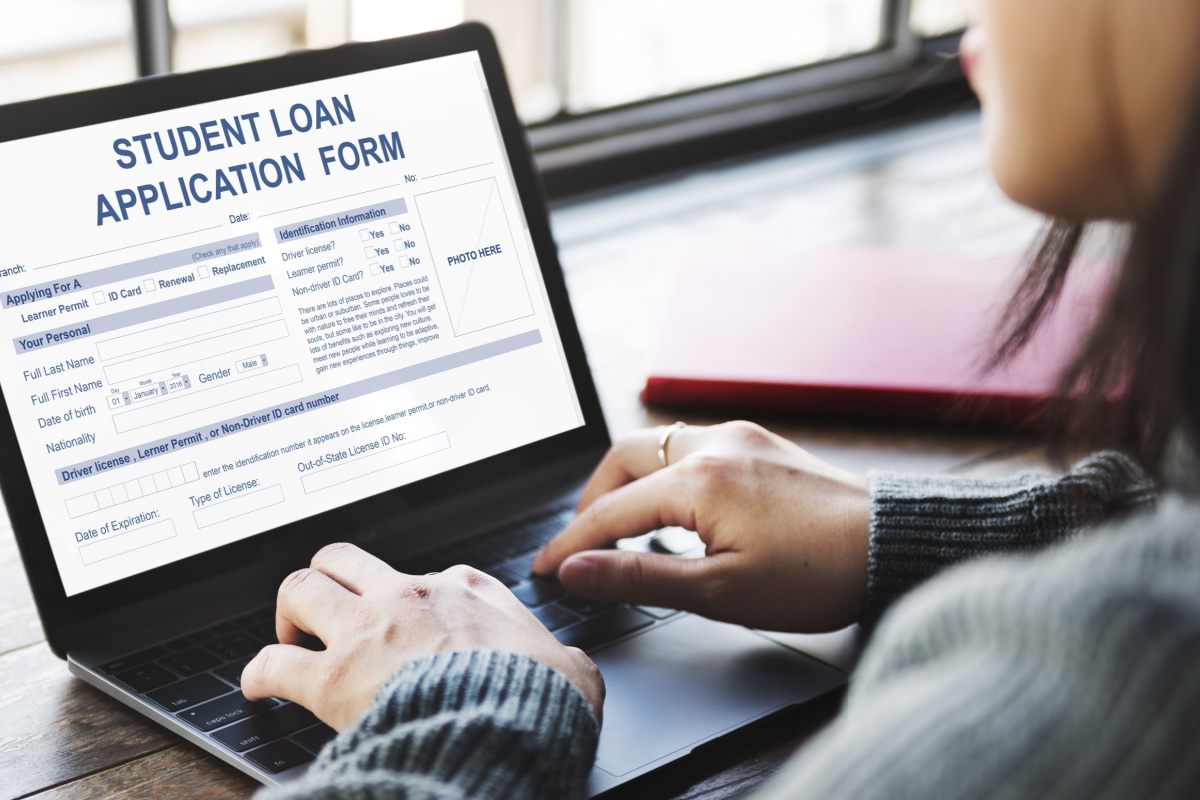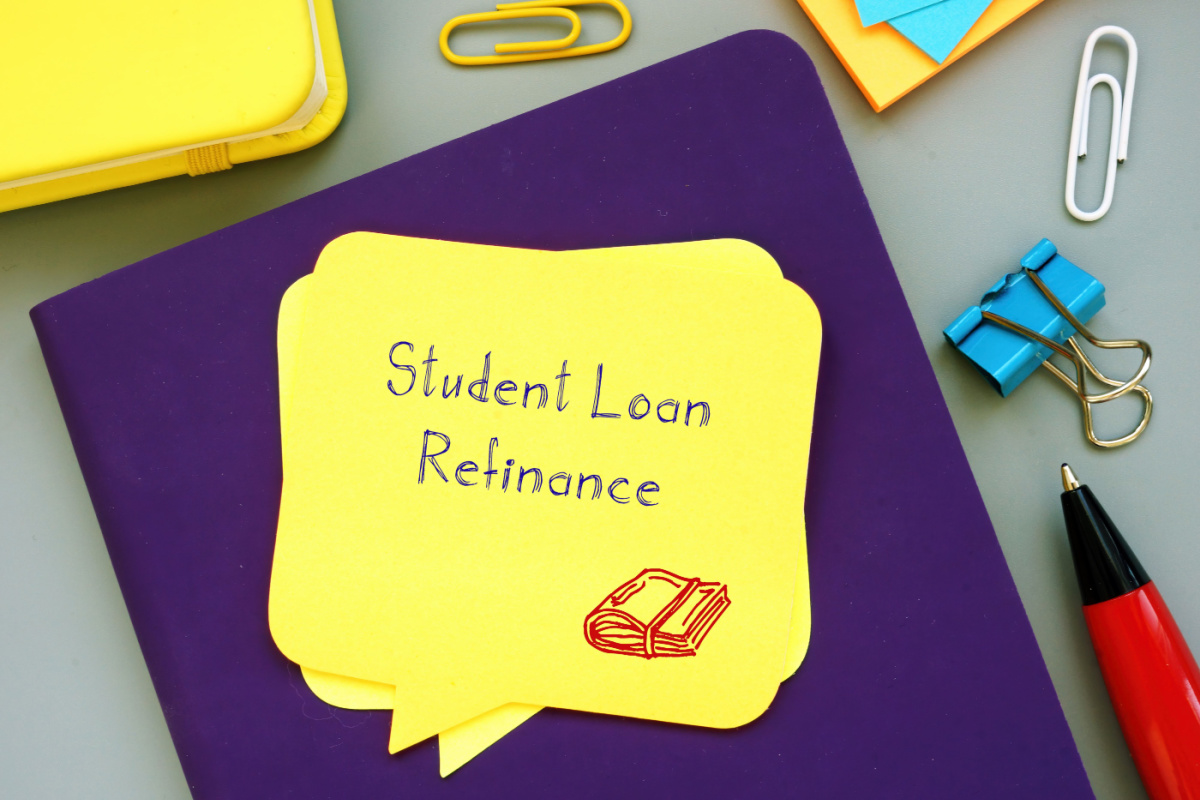Fixed or Variable: Deciding the Best Student Loan Rate
Higher education can open up a world of opportunities but often comes with a hefty price tag. According to Forbes, Americans collectively owe more than $1.6 trillion in student loan debt. Nevertheless, fixed or variable student loans remain the most popular way of funding higher education in the United States.
One of the most important decisions when taking out a student loan is choosing between a fixed or variable interest rate. However, as you navigate student life, knowing what’s best for your financial future can be challenging.
In this article, we’ll help you understand the key differences between these two types of loans and give you tips for choosing the one that’s right for you.
Please note that the content in this article is meant to inform you about the different options for student loans and should not be taken as financial advice.
Student Loan Fixed Rates
Fixed interest rates are exactly what they sound like – the interest rate stays the same for the duration of the loan. As a result, you will have a fixed monthly payment that does not fluctuate. Most private and federal lenders offer fixed-rate student loans.
Here’s a representative example of how a fixed-rate student loan works. Let’s say you borrow $20,000 in federal student loans with a fixed rate of 5%. The loan term is set at 10 years, repaid through monthly installments. With a fixed interest rate, your monthly payment will remain the same for the entire 10-year loan term. In this case, the monthly payment amount would be approximately $212.47.
Pros
Fixed interest rates come with many benefits. If you opt for a federal student loan or choose a fixed rate with a private lender, these are some of the advantages you may experience:
- Stability. Fixed rates offer stability and predictability, as you’ll always know exactly what your payments will be.
- Lower risk. They are a good choice if you’re a risk-averse person, as there’s no chance that your rate will increase.
- Easier to budget. You can budget more efficiently with a fixed-rate loan as you’ll know how much to dedicate to covering your debt each month.
Cons
On the other hand, you might miss out on several opportunities if you go for a fixed instead of a variable-rate student loan. Some of the disadvantages include the following:
- Missing out on lower rates. If interest rates drop, you won’t be able to take advantage of the lower rates.
- More costly. Fixed rates are typically higher than variable rates, which means that you may end up paying more over the life of the loan.
When to Consider a Fixed Rate
All federal student loans have a fixed interest rate. Conversely, private lenders may offer both options. If you plan to pay off your student debts over a long period, you may prefer a fixed-rate loan option. Fixed rates are also a good choice if the rates are currently low and you expect them to go up in the future.

Overall, a fixed-rate student loan can be a good option if your current income is low and you don’t want to risk paying more if the rates go up in the future.
Student Loan Variable Rates
Variable interest rates are tied to market conditions and can fluctuate over time. They are only offered by private lenders. These lenders usually tie the rates to a benchmark rate, such as the prime rate or the Secured Overnight Financing Rate (SOFR) index, plus a fixed margin.
The prime rate is the reference rate that influences consumer interest rates, while the SOFR is tied to overnight repurchase agreements in the U.S. Treasury. When both rates fluctuate due to monetary policy or inflation expectations, it affects the variable rates on student loans.
Here’s an example of a variable-rate student loan. Suppose you borrow $20,000 in private student loans with an interest rate of 5%. The loan term is 10 years, and you have to repay monthly. After three years, the lender raises the interest rate to 6%. This means that the monthly payments in the first three years would be approximately $207.94, while in the remaining seven years, the monthly payments would increase to $232.88.
Pros
Choosing a variable interest rate also comes with a list of advantages. Here are the pros of selecting a variable-rate student loan:
- Lower rates in the beginning. Variable rates typically come with lower rates at the beginning of the loan, which means you may accrue interest slower over the life of the loan.
- Possibility for the rates to decrease. If interest rates drop, you may take advantage of low rates and save money.
Cons
However, you might face some risks if you choose to go with variable rates. These are some of the drawbacks:
- Unpredictability. Variable rates can be unpredictable, so you may not always know what your monthly payments will be.
- More costly if the rates increase. If the rates increase, your monthly payments may rise, too, making it harder to budget.
When to Consider a Variable Rate
Variable-interest student loans can be a better option if you plan to pay off your debt early. If you qualify for the lowest rate possible and repay the loan before interest increases, you may save money.
If you’re unsure about what variable rates are, it’s important to remember that they are tied to market fluctuations. As a result, they come with considerable risk. If you have some wiggle room in your budget, you can aim for a variable interest rate if you plan to pay the loan off as soon as possible. Otherwise, variable rates can become a financial burden if they significantly increase, making it difficult to meet monthly minimums. Moreover, variable rates are typically only offered by private lenders that impose stricter eligibility requirements.
How to Refinance a Student Loan
What if you started with a variable rate student loan but want to change to a fixed term rate later? Each lender has their own terms and conditions, and you should ask them if it’s possible. If they agree, the only way to change your rate is through loan refinancing.
 Here’s how it works. First, you need to search for a new lender that offers a fixed rate and will agree to repay your variable-rate loan on your behalf. In return, you will repay a new student loan to the new lender.
Here’s how it works. First, you need to search for a new lender that offers a fixed rate and will agree to repay your variable-rate loan on your behalf. In return, you will repay a new student loan to the new lender.
Sometimes, loan refinancing can offer borrowers better rates and terms. However, you will need to meet the new lender’s requirements. As such, the lender that refinances your student loan will conduct financial and credit checks to determine your eligibility.
Before you commit to refinancing your loan, make sure to read the loan agreement carefully. Review the terms and conditions, such as interest rates, repayment dates, and additional fees. Keep in mind that it is not guaranteed that you will receive a better interest rate when you refinance your student loan.
Tips for Navigating the Fixed vs. Variable Dilemma
When considering whether to opt for fixed or variable student loans, research and weigh the pros and cons. Here are some tips to help you navigate the decision-making process:
- Consider the loan type and term. If you’re taking out a federal student loan, you only have the fixed rate option. A private lender may offer you both choices. However, private lenders usually set stricter eligibility requirements. Also, consider the term of the loan. A variable rate may be riskier if you have a longer-term loan, as the rates may increase significantly over time.
- Evaluate your financial situation. Consider your current financial situation and whether you can afford to make larger-sum payments in the future if you choose a variable rate. For instance, if you’re a college student who doesn’t plan on making payments until you are out of school, interest rates may change over time, and a fixed rate may be a smarter option.
- Look at historical rates. If you are considering a variable rate, check historical interest rate fluctuations. This can help you get an idea of how quickly rates can change and by how much. You can check the patterns on the Federal Student Aid’s website. While this information can help you anticipate rate and payment fluctuations, keep in mind that variable interest rates are often very volatile and unpredictable. As a result, you may not be able to accurately forecast future changes.
- Keep an eye on economic trends. Monitor the current trends, especially the economic situation in the U.S. and the world, as you might see signs of future interest rate fluctuations. For example, interest rates may increase when the government debt rises. On the other hand, if the economy is shrinking, lenders may decrease the rates to incentivize demand for credit.
- Consult with a financial advisor. If you’re still unsure which option is better for you, it’s always a good idea to talk to a financial advisor. It might also be a good idea to consult with your school’s financial aid department. They may provide one-on-one advice based on your financial situation. The school might also have additional resources, such as scholarships and grants, that can minimize the loans you must take out and eventually pay back with interest.
No matter which rate you choose, make sure you understand the terms and conditions of your loan agreement and evaluate how student loans affect credit scores. By reading the loan agreement thoroughly, you will better understand the obligations and responsibilities of the loan. The loan agreement will include information, such as the loan term and monthly due date. It will also include penalty information, such as additional fees. Keep in mind that failing to repay the loan on time can negatively impact your credit score.
Alternatives to Student Loans
For many students looking to pursue higher education, the cost of student loans may be too high to take on. However, there are alternatives to student loans that can help lower the amount you need to borrow and pay back with interest. Here are some common options:
- Grants and scholarships. Unlike loans, grants and scholarships do not need to be repaid. There are many types of grants and scholarships you can apply for, including merit-based and need-based. Some scholarship and grant programs also offer funds to students in certain regions, fields of study, and demographic groups. Keep in mind that scholarships and grants are competitive, as they are often given to one or a very limited number of students. As a result, students with high GPAs are more likely to qualify.
- Work-study programs. These provide students with employment opportunities on campus, allowing them to earn money to help them pay for their education. Work-study programs are typically need-based, and the wages earned by students can be used to offset tuition costs. In some cases, work-study programs can be tailored around your course schedule. However, you’ll likely only be working part-time.
- Part-time jobs. Even if you don’t qualify for work-study programs, taking on a part-time job while in school can help you earn money to pay for your education and reduce your reliance on student loans. Many college students also work on campus, such as in the library, cafeteria, or bookstore.
- Crowdfunding. Finally, with the rise of social media and crowdfunding platforms, such as GoFundMe, students can turn to online fundraising to help them pay for a portion of their education. While the donations likely won’t be substantial sums of money, some people may be more inclined to donate because it is going to a good cause.
Bottom Line
The choice between fixed or variable student loans can be a difficult one. There is no one-size-fits-all answer, as both options have their pros and cons.
However, by understanding the main differences between fixed and variable rates and improving your financial literacy, you can make an informed decision and successfully navigate the student loan process.





